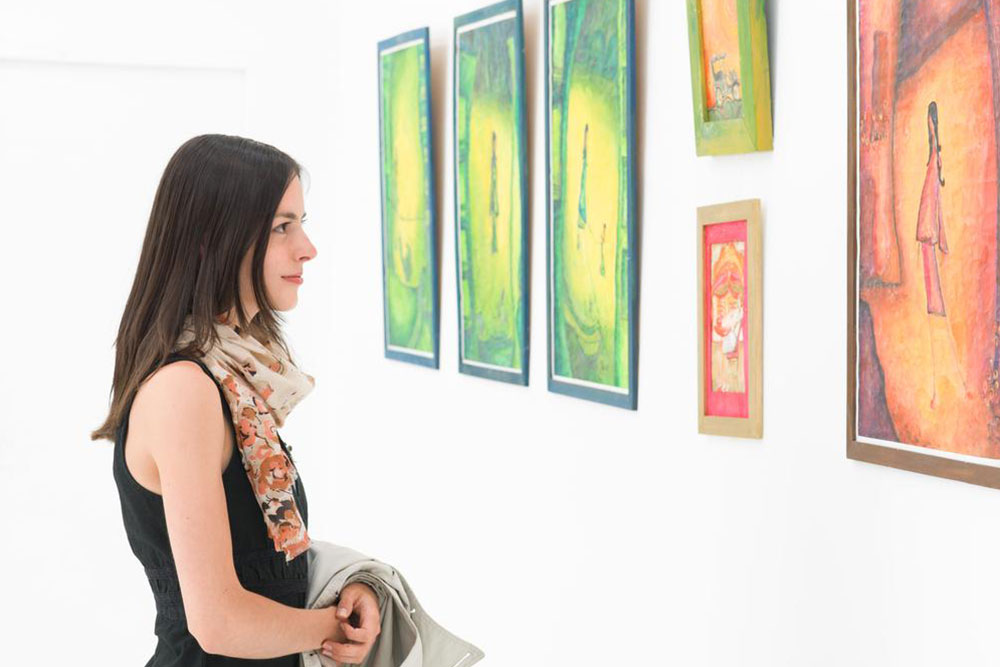A Comprehensive Guide to the Three Main Categories of Visual Art and Design
This detailed article explores the three main categories of visual art and design: fine arts, commercial arts, and decorative arts. It discusses their unique characteristics, historical significance, and modern applications. Understanding these categories enriches appreciation for diverse artistic expressions and their societal roles. The article also highlights notable artists and craftsmanship, emphasizing the importance of creativity and technical skill across different disciplines, making it an essential resource for art enthusiasts, students, and professionals alike.

Diving Deep into the Three Fundamental Categories of Visual Art and Design
Visual art and design are expansive fields that encompass an array of creative disciplines, from traditional artworks like painting and sculpture to modern digital media and functional designs. These diverse forms of artistic expression are generally organized into three principal categories: fine arts, commercial arts, and decorative arts. Recognizing these categories enables enthusiasts, students, and professionals to better appreciate the intentions, techniques, and cultural significance behind various artworks. Each category plays a crucial role in shaping our visual environment and societal aesthetics.
Fine Arts: Emphasizing Aesthetic Excellence and Artistic Freedom
Fine arts are traditionally regarded as the highest form of artistic expression, centered on creating beauty and provoking emotional or intellectual responses. These arts prioritize artistic freedom, allowing creators to explore abstract concepts, personal visions, or societal themes without the constraints of commercial viability. Artists working within this sphere utilize mediums such as painting, sculpture, architecture, drawing, printmaking, and calligraphy. Historically, the masters like Michelangelo, Leonardo da Vinci, and Rembrandt revolutionized the world of fine arts through their mastery of technique and enduring influence. In the modern context, artists like Vincent van Gogh, Pablo Picasso, and Jackson Pollock continue to challenge and expand the boundaries of fine art, blending traditional techniques with innovative approaches. Fine arts are often showcased in museums, galleries, and exhibitions dedicated to celebrating artistic mastery, emphasizing originality, technique, and expressive depth over utility.
Commercial arts are designed to serve commercial objectives, combining aesthetics with functionality. This category encompasses works that are aimed at marketing, advertising, branding, and mass communication. It includes digital media, advertising campaigns, photography, videography, animation, graffiti art, and visual effects used in films and TV. These forms of art are crafted to catch the viewer’s eye, communicate messages effectively, and persuade or inform audiences. Prominent artists like Andy Warhol and Salvador Dalí blurred the lines between commercial appeal and fine art, creating works that are both visually impactful and commercially successful. Commercial arts are found everywhere—from product packaging and billboards to online ads, social media content, and corporate branding—playing a vital role in shaping consumer perceptions and behaviors. These works are often created within specific client briefs, requiring a blend of creativity, strategic thinking, and technical skill to produce designs that resonate with broad audiences.
Decorative Arts: Merging Beauty with Practicality
Decorative arts focus on creating visually appealing objects that also serve a practical purpose. Often categorized as crafts, this category includes ceramics, glassware, mosaics, wooden furnishings, metalwork, textiles, and enamel decorations. Their primary use is in interior decoration, cultural expression, and personal adornment. These handcrafted items often reflect regional traditions, craftsmanship, and cultural narratives. Historical examples include William Morris’s William Morris textiles and wallpaper, as well as Peter Carl Fabergé’s exquisite Fabergé eggs—iconic symbols of craftsmanship and luxury. Decorative arts celebrate the union of form and function, showcasing the skill and creativity of artisans. Today, this category continues to evolve, blending traditional craftsmanship with contemporary design, and finding new expressions in interior decor, fashion accessories, and cultural artifacts.
Beyond these primary categories, visual arts also include specialized fields such as fashion design, interior decorating, graphic design, and body art forms like tattoos and face painting. Each of these disciplines contributes to the rich tapestry of visual culture, reflecting societal values, identity, and artistic trends. Whether serving aesthetic, commercial, or cultural purposes, visual art and design remain vital to human expression, influencing how we perceive and interact with the world around us.




